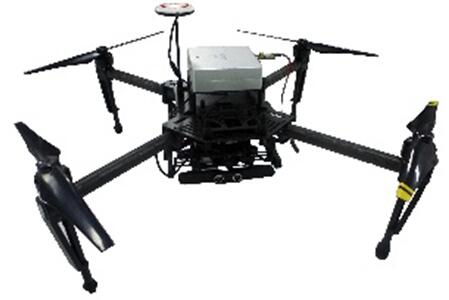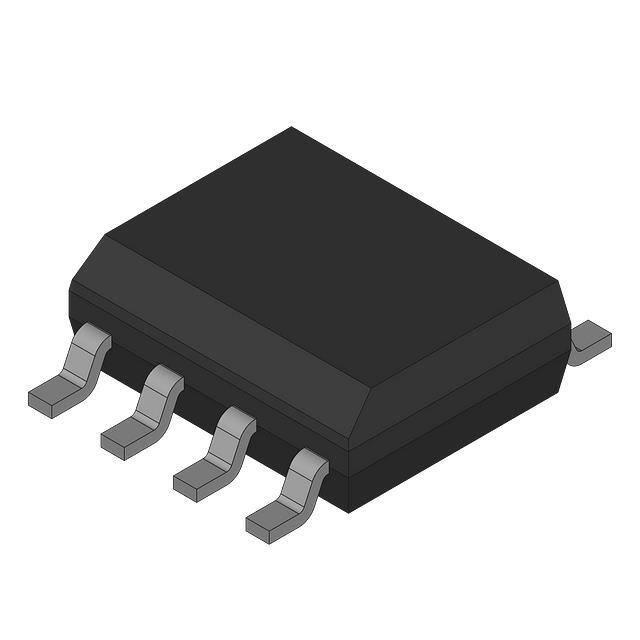Drone Chip Technology Application Solutions
As an important product of modern technology, drones have been widely used in military, agriculture, logistics, monitoring and other fields. The performance and application scenarios of drones are inseparable from the core hardware components, one of the most critical components of which is its chip. The drone chip is responsible for handling tasks such as flight control, image processing, and data transmission, so choosing the right chip is crucial.

Common Chips Used in Drones and Their Importance
1. GPS Modules (e.g., u-blox NEO-M8N)
GPS modules are the cornerstone of drone navigation and autonomous flight capabilities. The u-blox NEO-M8N stands out as a popular choice among drone manufacturers and enthusiasts alike.
Key Features:
Multi-constellation support (GPS, GLONASS, Galileo)
High accuracy with position error as low as 2.5m
Low power consumption, ideal for extending flight times
Importance: Without a reliable GPS module, drones would struggle to maintain their position, resulting in less accurate flight paths. This is particularly crucial for applications requiring precision, such as surveying or mapping.
Pricing: The u-blox NEO-M8N typically ranges from $20 to $40, depending on quantity and supplier. Prices can fluctuate due to global chip shortages. For the most up-to-date pricing and availability, we recommend contacting our sourcing team.
2. Flight Control Units (e.g., STM32F4)
The flight control unit (FCU) serves as the brain of the drone, responsible for stability control and command execution. The STM32F4 microcontroller is widely used in this role due to its powerful performance and efficiency.
Key Features:
32-bit ARM Cortex-M4 core with FPU
Up to 180 MHz operating frequency
Rich set of peripherals for interfacing with sensors and other components
Importance: This chip ensures the drone remains stable in flight by constantly adjusting motor speeds and handling inputs from the pilot or the autonomous control system. It’s critical for maintaining flight safety and precision.
Pricing: The STM32F4 series microcontrollers typically cost between $5 and $15, depending on the specific model and features. For bulk orders or custom implementations, our team can provide competitive quotes.
3. RF Transceivers (e.g., RFD900ux)
RF transceivers like the RFD900ux are crucial for long-range communication between the drone and its ground control station.
Key Features:
Range exceeding 40 kilometers in optimal conditions
Frequency-hopping spread spectrum (FHSS) for reliable communication
AES encryption for secure data transmission
Importance: Without an RF transceiver, the operator would lose control and telemetry feedback, which is particularly critical for long-range missions such as environmental monitoring or agricultural surveying.
Pricing: The RFD900ux modules typically range from $100 to $250 per unit. However, prices can vary based on customization requirements and order volume. Contact us for precise quotes tailored to your project needs.
4. ESC (Electronic Speed Controller) Chips (e.g., ARM Cortex-M0)
Electronic Speed Controllers (ESCs) regulate the speed of the drone’s motors, ensuring stable flight. Many modern ESCs use ARM Cortex-M0 chips for their efficiency and performance.
Key Features:
Low-latency processing for rapid motor speed adjustments
Energy-efficient design for extended flight times
Compact size, ideal for integration into slim drone designs
Importance: ESC chips help the drone remain airborne by dynamically adjusting motor power to stabilize the craft. In multi-rotor drones, the precise control of individual motor speeds is crucial for handling and performance.
Pricing: ARM Cortex-M0 based ESC chips typically cost between $3 and $10 per unit, depending on specifications and quantity.
5. Image Processing and Vision Chips (e.g., Qualcomm Snapdragon Flight)
For drones equipped with cameras, particularly those used for aerial photography or computer vision applications, image processing chips are essential. The Qualcomm Snapdragon Flight is a powerful chip that handles high-resolution image capture and real-time video processing.
Key Features:
Support for 4K video recording and image capture
Integrated machine learning capabilities for object recognition and tracking
Low-power consumption for extended flight times
Importance: These chips allow drones to process live video streams, enabling advanced functions like obstacle avoidance, target tracking, and autonomous navigation, which are crucial in industries like surveillance, agriculture, and cinematography.
Pricing: The Qualcomm Snapdragon Flight platform can range from $200 to $500, depending on the specific configuration and volume. For the most current pricing and availability, please reach out to our sourcing specialists.
Emerging Technologies in Drone Chips
As drone technology continues to evolve, new chip technologies are emerging to meet the growing demands of the industry. Here are some cutting-edge developments to watch:
1. AI-Enabled Chips
Artificial Intelligence is becoming increasingly important in drone applications, leading to the development of specialized AI chips for onboard processing.
Key Features:
Real-time object detection and classification
Enhanced autonomous navigation capabilities
Improved decision-making in complex environments
Potential Applications: Search and rescue operations, autonomous delivery systems, and advanced aerial cinematography.
2. 5G-Integrated Chips
With the rollout of 5G networks, drone manufacturers are incorporating 5G-capable chips to leverage high-speed, low-latency communications.
Key Features:
Ultra-low latency for real-time control
High-bandwidth data transmission for live 4K video streaming
Improved network reliability for beyond visual line of sight (BVLOS) operations
Potential Applications: Long-range drone deliveries, remote infrastructure inspection, and large-scale agricultural monitoring.
3. Quantum Sensors
While still in early stages, quantum sensors promise to revolutionize drone navigation and sensing capabilities.
Key Features:
Ultra-precise positioning without reliance on GPS
Enhanced magnetic field detection for improved navigation in GPS-denied environments
Potential for gravity mapping and underground resource detection
Potential Applications: Underground cave exploration, military operations in GPS-denied areas, and geophysical surveying.
Practical Applications and Case Studies
To illustrate the real-world impact of these drone chips, let’s explore some practical applications and case studies:
1. Precision Agriculture
Scenario: A large-scale farm uses drones equipped with multispectral cameras and advanced GPS modules for crop monitoring.
Chips Used:
u-blox NEO-M8N for precise positioning
Qualcomm Snapdragon Flight for image processing
Custom ARM Cortex-M4 based flight controller for autonomous flight patterns
2. Search and Rescue Operations
Scenario: A mountain rescue team employs AI-enabled drones for locating lost hikers in rugged terrain.
Chips Used:
AI-enabled vision processor for real-time object detection
Long-range RF transceiver for extended communication range
Thermal imaging sensor coupled with advanced image processing chip
3. Infrastructure Inspection
Scenario: A power company uses 5G-enabled drones for real-time inspection of high-voltage power lines.
Chips Used:
5G-integrated communication module
High-resolution camera with advanced image stabilization
LiDAR sensor for precise distance measurements
How to choose the right chip for your drone project
When choosing the right drone chip, you need to consider several factors:
Demands of application scenarios
When choosing a chip, you must first clarify the application scenario of the drone, such as agriculture, logistics, monitoring or military. Different applications require different chip configurations. For example, agricultural drones require precise positioning and image recognition functions, while logistics drones focus more on communication and endurance.
Performance and power consumption
When choosing a chip, balance processing performance and power consumption. High-performance chips may consume more power, so you need to consider how to extend the flight time while ensuring performance.
Compatibility and scalability
The compatibility and scalability of the chip are also very important. Make sure that the selected chip is compatible with other systems (such as flight control, image sensor, communication module), and can be expanded and upgraded according to needs.
Cost and supply chain stability
Chip cost and supply chain stability are also important factors to consider when selecting a chip. Choose the right chip based on your budget, and consider the long-term supply guarantee of the chip to avoid project delays due to supply issues.
Conclusion
Drone chips are a vital component of drone technology, and their selection directly affects the performance and application areas of drones. With the continuous development of emerging technologies, new technologies such as AI, 5G, and low-power design are driving drone chips towards higher intelligence, integration, and power optimization. When choosing the right chip for a drone project, it is necessary to comprehensively consider multiple factors such as application requirements, performance requirements, power management, and cost. Through scientific and reasonable chip selection, the potential of drones can be fully utilized and the application of drone technology in various industries can be promoted.
At Dasenic Electronic, we focus on the supply of electronic components and provide a comprehensive one-stop service for your electronic needs. Whether you are creating a prototype or planning large-scale production, our professional team will support you.
Contact us now to get personalized help and competitive pricing to optimize your drone project. Together, we will turn your vision into reality in a precise and efficient way!


